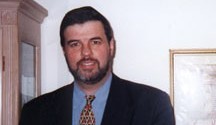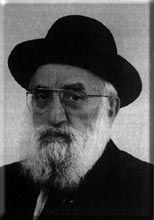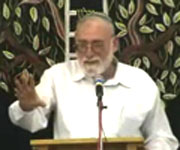Beit Midrash
- Shabbat and Holidays
- Shabbat
In a different article, I explained that one must desecrate Shabbos even if there is only a slight possibility of pikuach nefesh. One does not need a professional opinion that the situation is dangerous - on the contrary, if a lay person is uncertain whether the situation is dangerous or not, one desecrates Shabbos first and asks questions later (Shu"t Tashbeitz 1:54). Furthermore, the rav of a community and the halachic media are responsible to publicly teach these halachos so that people know them thoroughly. If people ask what to do, it indicates that the rav has been negligent in teaching these halachos (Yerushalmi, Yoma 8:5 and Korban HaEidah ad loc.). To quote Shulchan Aruch (Orach Chayim 328:2): "It is a mitzvah to desecrate Shabbos for a dangerous illness. He who does so swiftly is praised; the person who asks what to do is a shedder of blood!" Shulchan Aruch (Orach Chayim 328:13) reiterates, "Whoever is swift in desecrating Shabbos in a matter that involves danger is praised!
Please note that this rule applies equally on weekdays! If someone is uncertain whether a particular situation is life threatening or not, he/she must immediately seek proper medical attention. Delaying might be bloodshed!
This is the basic reason for the creation of Hatzalah; experience has proven that those motivated to save lives because of their devotion to mitzvos act much swifter and more devotedly than official emergency squads. Those curious to research Rav Moshe Feinstein’s instructions to Hatzalah will enjoy reading Shu"t Igros Moshe, Orach Chayim 4:80 and 5:25.
THE HATZALAH RADIO ON SHABBOS
As mentioned above, in every situation of pikuach nefesh one is required to act as swiftly as possible to save lives. Therefore someone responding to a call that might involve a life threatening situation must bring along his radio in case he needs to summon an ambulance or other assistance. The question that we are discussing here is whether one may carry or wear a Hatzalah radio when no emergency exists in order to be available should the need arise. This involves shaylos of muktzah and carrying on Shabbos.
IS A RADIO MUKTZAH? MAY ONE CARRY IT ON SHABBOS?
Of course, everyone’s immediate reaction is, "Of course, a radio is muktzah and may not be moved on Shabbos." However, although it is definitely true that one may not move a radio on Shabbos for no purpose; carrying a Hatzalah radio may be permitted on Shabbos as I will explain. To understand this question, we first need an introduction to the basic laws of muktzah.
THE ORIGINS OF MUKTZAH
In the period of the construction of the second Beis HaMikdash, Nechemiah noticed that many Jews were extremely lax in Shabbos observance. In his own words, "In those days, I saw people in Judea operating their winepresses on Shabbos and loading their harvest on donkeys; and also their wine, grapes, and figs and all other burdens; and transporting them to Yerushalayim on Shabbos... the Tyrians would bring fish and other merchandize and sell them to the Jews" (Nechemiah 13:15-16). Nechemiah then describes how he succeeded in closing the city gates the entire Shabbos in order to keep the markets closed.
To strengthen Shabbos observance, Nechemiah established very strict rules concerning which utensils one may move on Shabbos. These rules form the foundation of the halachos of muktzah (Gemara Shabbos 123b). Initially, he prohibited using and moving virtually all utensils, excluding basic eating appliances such as table knives. We will call this Nechemiah’s "Original Takanah." By prohibiting the moving of items even indoors he reinforced the strictness of not carrying outdoors on Shabbos (Gemara Shabbos 124b; Raavad, Hilchos Shabbos 24:13). Furthermore, the laws of muktzah shield people from mistakenly performing forbidden activities with these tools. In addition, these laws create a Shabbos atmosphere that is qualitatively different from the rest of the week even for an individual whose daily life includes no manual activity (Rambam, Hilchos Shabbos 24:12-13).
As the Jews upgraded their Shabbos observance, Nechemiah gradually relaxed the rules of muktzah, permitting limited use of some tools on Shabbos. These were Nechemiah’s Second Takanah, Third Takanah, and Fourth Takanah, the details of which the Gemara discusses (Shabbos 123b). Eventually, Nechemiah established rules whereby one may move and use most utensils on Shabbos when necessary, whereas objects that one would never utilize on Shabbos remained prohibited (except for unusual circumstances such as danger). When discussing the halachos of muktzah as they apply today, I will refer to Nechemiah’s "Final Takanah."
THE CATEGORIES OF MUKTZAH
Nechemiah’s Final Takanah established four distinct categories:
1. Non-muktzah: Items that one may move without any reason whatsoever. This category includes food, sifrei kodesh and, according to many authorities, tableware (Mishna Berurah 308:23) and clothing (see Shitah La’Ran, Shabbos 123b s.v. Barishonah). Nechemiah never included these items even in his original, very strict Takanah, because they are in constant use.
2. Kli she’me’lachto l’heter is a utensil whose primary use is permitted on Shabbos, such as a chair or pillow. One may move this utensil if one needs to use it, if it may become damaged, or if it is in the way. (The Gemara calls this last case l’tzorech m’komo, literally, to use its place.) I may not move a kli she’me’lachto l’heter without any reason or even to help me perform a task I could perform without any tool (Gemara Shabbos 124a; Shaar HaTziyun 308:13). (I find that people are often surprised to discover this halacha.)
3. Kli she’me’lachto l’issur is a tool whose primary use is forbidden on Shabbos, such as a hammer, saw, or needle. One may move these items only if they are in the way or if one has a Shabbos-appropriate purpose for them, such as using a hammer to crack open a coconut or a needle to remove a splinter (Mishnah Shabbos 122b and Gemara Shabbos 124a). (However, one should be careful not to intentionally cause bleeding [Magen Avraham 328:32; see also Biur Halacha 308:11] and one may not sterilize the needle first [see Rambam, Hilchos Shabbos 12:1].) One may remove a kli she’me’lachto l’issur that was left on a table, counter, or chair, if one needs to put something else there. However, under normal circumstances, one may not move a kli she’me’lachto l’issur if one is concerned that it may become damaged where it was left. Nevertheless, if one knows that he will need to use a kli she’me’lachto l’issur later that day and is afraid that it will be stolen, broken or ruined and unusable by then, he may save it (Tehillah LeDavid 308:5). This is because making sure that it is available for later use is considered using it.
4. Completely Muktzah. These are items that one may not move at all under normal circumstances. For our purposes, we will subdivide this category into two general sub-categories:
4A: Items that do not qualify as utensils or food at all, such as money, living animals, sticks and stones.
4B: Utensils that one has no reason to move on Shabbos, such as merchandize that one intends to sell.
4C: A possible third category:
According to many authorities, another category of muktzah utensils includes utensils whose use is only for prohibited purposes on Shabbos. In other words, one may move a kli she’me’lachto l’issur only when this specific utensil has an occasional use that is permitted on Shabbos, such as a hammer, which someone might use to open a coconut, or a pot, which although primarily used to cook food, is also used to store food after it is cooked. However, some poskim prohibit moving a candle on Shabbos, although it is halachically considered a "utensil," since it is not suitable for any permitted use on Shabbos at all. These poskim contend that this type of utensil is considered muktzah and may not be moved even if it is in the way (see Pri Megadim, Aishel Avraham 279:12; Aruch Hashulchan 279:1; based on Tosafos, Shabbos 36a s.v. Ha Rabbi Yehudah and Baal HaMaor, Shabbos 154b). However, other poskim consider a candle and any other utensil to not always be muktzah, contending it may be moved if it is in the way or it has a Shabbos purpose (Magen Avraham 308:18; based on Rashba, Shabbos 154b).
DIFFERENCES BETWEEN KLI SHE’ME’LACHTO L’HETER AND SHE’ME’LACHTO L’ISSUR
After Nechemiah’s later takanos, both kli she’me’lachto l’heter and kli she’me’lachto l’issur have an interesting status: sometimes they are muktzah and sometimes not, depending on why one wants to move them. Both a kli she’me’lachto l’issur and a kli she’me’lachto l’heter may be moved if one needs the use of the appliance.
There are several halachic differences between a kli she’me’lachto l’issur and a kli she’me’lachto l’heter, most of which are not germane to our discussion about Hatzalah radios. However, there is one halachic distinction that is germane, as we will see: One may carry a kli she’me’lachto l’heter early in the day even though he does not anticipate needing it until much later that day (Taz 308:2). This is considered as using the kli. On the other hand, a kli she’me’lachto l’issur may only be picked up when one actually needs to use it (with the exception of when one is concerned that it may be broken or stolen as I mentioned earlier).
WHAT IS A RADIO?
Having explained the different categories of muktzah, under which category does a Hatzalah radio fit?
Clearly it does not fit into the first category of items that are excluded from the laws of muktzah and may be moved without any reason.
One could conceivably categorize a Hatzalah radio under the category of items that have no purpose on Shabbos since a radio under normal non-pikuach nefesh circumstances is not used on Shabbos. One who holds this way would still permit carrying the radio when there is an emergency; the shaylah is only whether one may carry the radio when there is no emergency.
It is far more likely that we should consider a Hatzalah radio either kli she’me’lachto l’issur because its typical use is prohibited on Shabbos or as a kli she’me’lachto l’heter because realistically one may need it on Shabbos. (One might categorize a Hatzalah radio as similar to a bris milah knife, which is usually considered muktzah, yet many poskim rule that it is not muktzah if the mohel has a bris to perform on Shabbos.) I want to point out that according to both of these approaches, one may carry the Hatzalah radio when one may need to use it, and one may move it if it may become stolen or broken and he may need it later today.
Also, as all Hatzalah volunteers know, one may only use the radio on Shabbos when a potential pikuach nefesh emergency exists and only to the extent necessary for the emergency.
ANTICIPATING EMERGENCIES
Until this point I have been discussing to what extent the Hatzalah radio is muktzah. We have not yet discussed whether wearing the radio is considered carrying and therefore forbidden outside an eruv when no emergency exists. In a future article I hope to address the question of whether one may supersede violations of the Torah because of the possibility that a pikuach nefesh situation may develop. For now, we will simply analyze whether one may wear a Hatzalah radio in a place that is not enclosed by an eruv.
CARRYING THE RADIO ON SHABBOS WHERE THERE IS NO ERUV
The Mishnah (Shabbos 63a) records a dispute between Rabbi Eliezer and the Chachamim whether one may carry weapons on Shabbos when there is no pikuach nefesh to carry them. Rabbi Eliezer rules that a man may carry a weapon outside an eruv on Shabbos because he considers it a tachshit, decorative attire. Although weapons are not inherently nice looking, since men wear weapons as a sign of importance they are considered tachshitin. The Chachamim disagree, noting that in the days of Moshiach men will no longer ornament themselves with weapons; therefore, they are not inherently tachshitin (Gemara Shabbos 63a). The Chachamim rally support to their approach from a famous pasuk, "And they shall pound their swords into plowshares, and their spears into pruning hooks (Yeshaya 2:4)," demonstrating that in the times of Moshiach weapons will be meaningless. If weapons were indeed tachshitin, men in the Moshiach era would not destroy them.
In a teshuvah addressed to Hatzalah, Rav Moshe Feinstein (Shu"t Igros Moshe, Orach Chayim 4:81), permits Hatzalah members to wear radios on Shabbos clipped to their belts. Rav Moshe contends that one sees from the above-quoted Gemara that an item might be a tachshit even though it is not a garment and has no real aesthetic function, but is worn to show prominence. Although the Chachamim disagreed with Rabbi Eliezer’s ruling that a weapon is a tachshit, this is because they proved from the pasuk that weapons do not show inherent importance since they will have no value after Moshiach. However, a different item that shows importance, or is an identification of one’s profession, is considered a tachshit and may be carried on Shabbos, even according to the Chachamim. Rav Moshe contends that the Hatzalah radio shows that the wearer is involved in this important mitzvah of saving lives and is a badge of honor; it therefore qualifies as a tachshit. Similarly, according to Rav Moshe, a physician or medical student may walk the streets with a stethoscope draped around his or her neck since it is a sign of that he/she is qualified to practice a well-respected profession.
Others disagree with Rav Moshe’s comparing the Hatzalah radio to a weapon, contending that a weapon is indeed sometimes worn as a tachshit, as in the wearing of a military dress uniform in which a sword is part of the attire. However, Hatzalah volunteers do not wear the radio as an ornament (Rav Shimon Schwab).
Some rabbonim suggested a different approach to transport the Hatzalah radio, by making it part of one’s functional garment. To fulfill this approach, a Shabbos belt was designed in which the radio actually held the belt together. When removed the belt would fall off; thus, these rabbonim hold that this is a permitted method of carrying the Hatzalah radio (Nishmas Avraham, 5:175).
Others feel that since the radio is not really usually part of the belt, but is a separate valuable piece of equipment, including it in a belt as described above does not make it part of the belt (Rav Yehoshua Neuwirth; see Shemiras Shabbos KeHilchasah 18:33). They would require a different means of transporting a radio on Shabbos, although they may agree to Rav Moshe’s psak that it may be clipped in the normal fashion to one’s belt.
Thus, the result is that one chapter of Hatzalah allows, or even insists, that its members wear radios clipped in the usual fashion on Shabbos, whereas others may insist that their members wear their radios in a "Shabbos belt." All rabbonim and chapters agree that when following up an emergency the Hatzalah volunteer may carry his radio and must do so if it is necessary for the emergency.
Certainly each Hatzalah chapter should follow the instructions of its local rabbonim. As I mentioned earlier, the critical point to remember when faced with a Shabbos emergency that is beyond one’s expertise is to act first and ask questions later, and follow the instructions of those who are more medically knowledgeable.
The author thanks his brother, Rav Yehoshua Kaganoff of Passaic, NJ, as the source for many of the halachic opinions quoted in this article.
This Shiur is published also at Rabbi Kaganof's site

Writing on Shabbat
Rabbi Yirmiyohu Kaganoff

Ask the rabbi: can I use a hand-held fan on shabbat?
Rabbi Stewart Weiss | 7 Iyar 5784
Shabbat Shoes
Rabbi Berel Wein zt"l | Tevet 6 5780






















